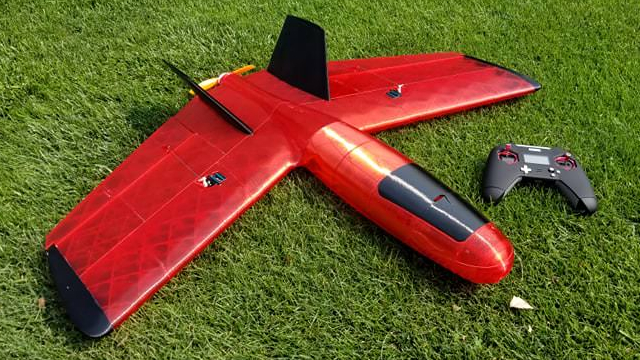Designing and 3D printing RC planes offer several interesting challenges, and so besides being awesome looking and a fast flier, [localfiend’s] Northern Pike build is definitely worth a look. Some details can be found by wading through this forum but there’s also quite a bit on his Thingiverse page.

Naturally, for an RC plane, weight is an issue. When’s the last time you used 0% infill, as he does for some parts? Those parts also have only one perimeter, making this thin-walled-construction indeed. He’s even cut out circles on the spars inside the wings. For extra strength, a cheap carbon fiber arrow from Walmart serves as a spar in the main wing section. Adding more strength yet, most parts go together with tongue-and-groove assembly, making for a stronger join than there would be otherwise. This slotted join also acts as a spar where it’s done for two wing sections. To handle higher temperatures, he recommends PETG, ABS, ASA, Polycarbonate, and nylon for the motor mount and firewall while the rest of the plane can be printed with PLA.
As you can tell from the videos below, [localfiend’s] flier is a high-performance 3D printed machine. But such machines don’t have to be relegated to the air as this RC jet boat demonstrates. Though some do hover on a thin cushion of air.
When launching his first flight, he learned that he didn’t need to toss it too hard.
We’re grateful to [Aidan] for sending in this tip.
















This is just awesome! A unique swept wing Burt Rutan style design and it can be printed/flown! When first got into RepRap all the aero kids at college said this wouldnt work.
Heh, in the 90s I saw eastern european model aircraft kits that had injection moulded ribs and composite tube spars because balsa was practically unobtanium there.
Printing at 1 wall thickness is not exactly the most durable but a sacrafice to keep it light. I have been following a few of these 3d printed airplanes, some designs have been very creative with the ribs and considerate of the 3d printing need for supports or 45° braces. They look fantastic and more of the videos are of early flights, i would like to know if it holds up after many landings.. The hot glue doesn’t look as nice when you piece the plastic together vs sticking foam back together.
Not into the hobby but I assume it holds up just as good as a balsa frame with the shrinkwrap skin with the only caveat being repairability.
You’re probably not wrong, but most planes aren’t built like that anymore. The vast majority of RC planes are foam now, and can take a serious beating.
So this is probably as fragile as old-style RC planes, which are nowhere near as durable as modern ones.
Well there was fragile and fragile, depending on the structure and covering, eggbox style and doped nylon would mostly bounce off the ground.
Generally to repair these you’d cut out the section that is damaged along its glue line and print another section. Add more CA glue and you’re good to go.
I got nearly 20 flights off my last version of this plane with no problems at all, the PETG plastic is quite durable and much more heat resisitant than PLA. I say nearly 20, cause I completely oblitereed the plane flying full throttle, inverted, and low to the ground last saturday. Pilot error. :D
At the speed I was going very few airframe or build types would have come out unscathed. Foam, balsa, foamboard, all would have exploded. Only thing that may have made it would be a tape coated epp flying wing, and even one of those woulda been hurting.
Oh! Someone should try launching an Estes rocket from one, since folks are already inspired by SpaceX to try vertically landing one. It would need thrust vectoring to go vertical once it leaves the airplane.
Given how little thrust time you have with one of those, probably be better to just pitch the plane up before deploying the rocket. Like the ASM-135 anti-satellite missile that the F-15 fired.
I’m still a little sad that it looks like LOHAN, THe Register’s 3d printed rocket plane project is probably never going to happen. It would be a fitting tribute to Lester Haines to blast a 3d printed ballocket into the stratosphere.
You’re probably not wrong, but most planes aren’t built like that anymore. The vast majority of RC planes are foam now, and can take a serious beating.
So this is probably as fragile as old-style RC planes, which are nowhere near as durable as modern ones.
Durability is both better, and worse than a foam plane. A hard crash will certainly break stuff, but of you don’t abuse the plane it will hold up better than foam and stay looking nice longer.
The real benifits however are flying characteristics. Printed plastic is a good bit stiffer than most foam planes, and therefore it’s a much more precise and responsive flier. This particular design flies like it’s on rails, and goes exactly where you point it.
Of course, the other big positive is that if you do have a total wipeout, it’s only 15 bucks for a new airframe to move your electronics into, and you can print it yourself.
This makes me wonder if there’s much benefit from impregnating styrofoam with helium rather than air?
It’d be a fun science experiment but it will leech out eventually even balloons have a hard time containing it for a long duration.
It probably helps durability that this thing is made of PETG. Think of it like the flexibility but raw toughness of a soda bottle.
Looks great and probably flys fast
It’l actually performs very well at slow speeds, but can also go fast. With the current power setup it should be doing around 100mph. Working up something with a bit more kick. I’d like to do 150mph+